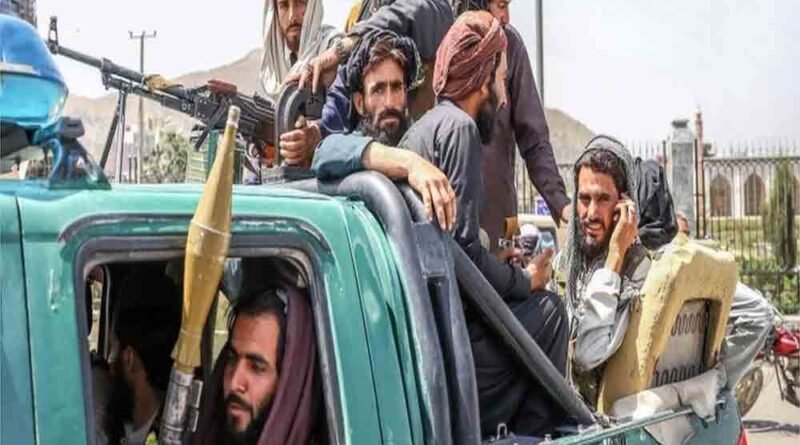Who’re the Taliban? What is their credo?
The Taliban fundamentalist organisations have spawned from the Deoband madrasa, and the ideology preached there has worldwide influence
The Taliban in our neighbouring Afghanistan are in the news after the sudden takeover of Afghanistan by the militia’s hordes. But who actually are the Taliban? To learn more about them, we must turn our attention to Deoband, barely 300 km from our Capital, Delhi.
The Deoband madrasa was set up in 1867 as a reaction against the end of what remained of the Mughal Empire following the defeat of the Sepoy Mutiny of 1857-58. The seminary’s objective was to preserve Islamic learning and way of life. It began with one teacher, Mullah Mahmud Deobandi, and was originally known as the Arab madrasa. There were those who swore vengeance on the British; out of these movements emerged the Taliban as well as al-Qaeda (though much later), with global aspirations.
In the period military dictator General Zia-ul-Haq was fervently Islamisising Pakistan, the Taliban first emerged in Afghanistan as a cohesive unit. Rahimullah Yusufzai, a Peshawar-based scholarly journalist, in an interface with Charles Allen, a renowned historian of the British Raj (and grandson of the founder of The Pioneer daily), reported being the first journalist to note the appearance of the Taliban on the Afghan scene in 1994. They were unsmiling youngsters with untrimmed beards, black turbans, black waistcoats, carrying either Kalashnikov automatic rifles or grenade launchers.
In 1879, the Deoband madrasa assumed the additional name of Dar-ul-Uloom, or the abode of Islamic learning. English was prohibited; all students had to learn the Quran and the Hadith in Arabic. This was in accordance with the teachings of Shah Waliullah of Delhi. The madrasa retained militant jihad as a central pillar of the faith. Officially, Deoband has rejected ijtihad (the use of independent reasoning) in matters of the Sharia. Around the end of the 19th century, the teachings at the madrasa were traditional and termed Salafi, or following the forefathers based on the ideas of renowned jurists Hanabali and Ibn Tamiyya. The ideology preached at the institution has worldwide influence. A true Muslim’s first duty is to defend his religion wherever it is under attack. Sunni Islam of South Asia has been impacted the most by these teachings.
The Jamiat-e-Ulema-I-Hind (JUH), the Party of Clerics of Hindustan, formed in 1920 later resulted in two splinter groups: Tablighi Jamaat (Preaching Party) led by Naqshbandi Sufi Maulana Muhammad Ilyas followed the teachings of Shah Waliullah. The second was led by Mawdudi, who promoted a new political agenda. For him, Islam had to present itself as a viable political and social alternative to both Western capitalism and socialism. He advocated a new political platform based on Islamic revival and separation through political action and jihad. Islam had to confront non-Islam head on. Out of the Islamic revolution would emerge the Islamic State purged of all accretions, that is, a ‘democratic’ caliphate whose citizens would embrace Sharia willingly. In 1939, Mawdudi moved to Lahore. Two years later, he founded Jamiat-e-Islami (JI) in direct opposition to JUH. As the demand for a separate Muslim State grew in India, a number of Deobandis formed another outfit, the Jamiat-e-Ulema-e-Islam, or party of scholars of Islam, in 1945 under the leadership of Maulana Shabbar Ahmad Othmani and Maulama Mufti Mahmud. Its aim was to shape the upcoming nation of Pakistan into a truly Muslim State with an Islamic Constitution in conformity with the Quran and Sharia, a vision it shared with Tablighi Jamaat.
Ahead of Partition in 1941, there were around 200 madrasas in Pakistan, rising to 893 by l972. Of these, 354 were Deobandi, 144 Al-Hadith and 267 Barelvis. By 1980, nearly 70 per cent of the madrasas were controlled by Deobandis. By 2002, their number was 10,000; of this, 7,000 belonged to Deobandis. Going by this trend, all madrasas would now be under the control of Deobandis. Such is the extent of influence of the institution based in Deoband.
Most of the Taliban are the products of these madrasas, which have become nurseries for producing more Taliban. The various fundamentalist organisations that exist now in India and Pakistan are one way or the other connected to the Deoband madrasa. The Taliban in Pakistan and Afghanistan have acknowledged the inspiration received from Deoband (India).
Charles Allen, in his book ‘God’s Terrorists — The Wahhabi Cult and the Hidden Roots of Modern Jihad’, points out that Wahhabism is the guiding ideology behind modern Islamist terrorism. The Taliban are representatives of this ideology in action. Allen mentions that Ahmad Rashid has meticulously captured the rise of Taliban in his book, ‘Taliban: The Story of the Warlords’. In Rashid’s words: “The Taliban represent nobody but themselves and recognised no Islam but their own.”
The Shia Revival says that the Deobandi area of influence stretches from Bangladesh to southern Afghanistan. The Deobandis became associated with the Afghan war in the 1980s. Many other of South Asia’s Sunni extremists hail from the Deobandi tradition. The Pakistan-trained Taliban committed atrocities on the Afghan Hazaras. The Taliban declared Afghan Shias to be infidels and massacred at least 2,000 of them in Mazar-e-Sharif and Bamiyan in 1997-98. Others have been told to convert to Sunnism or face death.
(The author is a seasoned writer, an editor and analyst with publications in Hindi and English. The views expressed are personal.)
Source: The Pioneer




